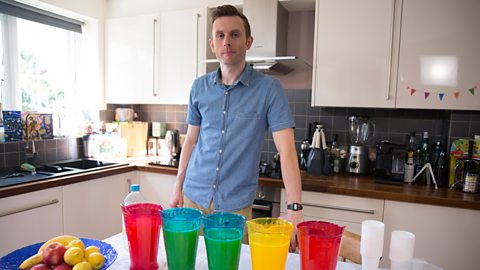What is place value?
Watch the video to find out more.
Speaker: Where a digit sits within a number tells you its value. Its place value.
If it's a unit, a ten or a hundred, the position gives the digit a different value.
This flat is for sale for ÂŁ147,999.
So that's 100,000, 40,000, 7000, 900, 90 and 9 pounds.
Because the 1 is in the hundred thousands position, the 4 is in the tens of thousands position, the 7 is in the thousands position, the 9 is in the hundreds, this 9 is in the tens and this 9 is in the units.
And say this number had a decimal point in it, like .99 - we see this a lot in shops.
The numbers after the decimal point are tenths and hundredths.
What is the value of each digit?
Test your knowledge with this activity.
Multiplying and dividing by 10
Watch the video to find out more.
Speaker: Understanding place value means you've got an easy way to multiply by 10.
You simply move all the digits one to the left.
So this notebook cost ÂŁ4.99. But if I bought 10 of them I could multiply ÂŁ4.99 by 10 by moving the 4 to the tens position, the two 9s to the left, and putting a 0 in the hundredths.
So 10 notebooks would cost ÂŁ49.90.
And if I want to divide by 10 then I move the digits the other way, to the right.
So my 10 pack of pens at £1.40… divide by 10 to get the price of 1 pen.
1 unit becomes a tenth, 4 becomes a hundredth. So each pen is ÂŁ0.14.
14 pence.
Try multiplying and dividing by 10
Test your knowledge with this activity.
Comparing prices using place value
Watch the video to find out more.
Speaker: These prices here have the same digits in them.
But the 0 is in a different place.
So the 5 here is 5 tenths, and the 0 is hundredths. So that's 50p.
And then here, 0 tenths and 5 hundredths. So that's 5 pence.
So this one is cheaper than this one. Right, that's the one I'm having.
Put the numbers in the right order
Test your knowledge with this activity.
More on Learn the basics
Find out more by working through a topic
- count6 of 9

- count7 of 9

- count9 of 9
